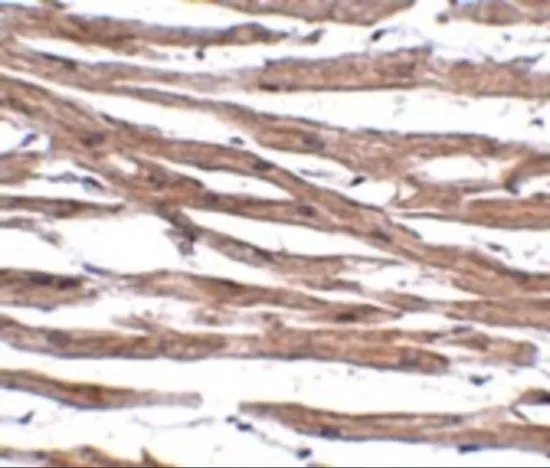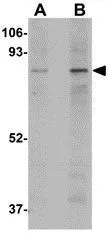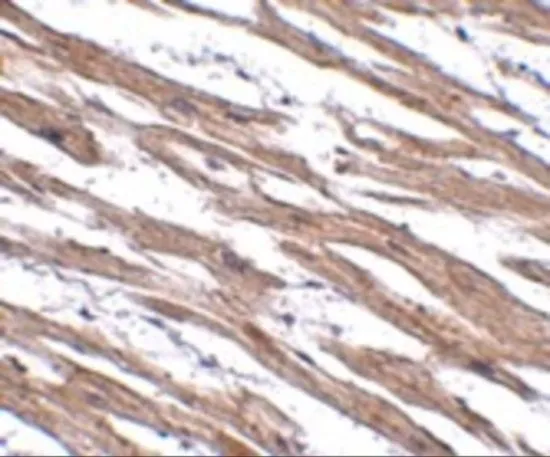
IHC-P analysis of human heart tissue using GTX85264 MAK10 antibody. Working concentration : 5 microg/ml
MAK10 antibody
GTX85264
ApplicationsWestern Blot, ELISA, ImmunoHistoChemistry, ImmunoHistoChemistry Paraffin
Product group Antibodies
ReactivityHuman, Mouse, Rat
TargetNAA35
Overview
- SupplierGeneTex
- Product NameMAK10 antibody
- Delivery Days Customer9
- Application Supplier NoteWB: 1 - 2 microg/mL. IHC-P: 5 microg/mL. *Optimal dilutions/concentrations should be determined by the researcher.Not tested in other applications.
- ApplicationsWestern Blot, ELISA, ImmunoHistoChemistry, ImmunoHistoChemistry Paraffin
- CertificationResearch Use Only
- ClonalityPolyclonal
- Concentration1 mg/ml
- ConjugateUnconjugated
- Gene ID60560
- Target nameNAA35
- Target descriptionN-alpha-acetyltransferase 35, NatC auxiliary subunit
- Target synonymsEGAP, MAK10, MAK10P, bA379P1.1, N-alpha-acetyltransferase 35, NatC auxiliary subunit, MAK10 homolog, amino-acid N-acetyltransferase subunit, corneal wound healing-related protein, embryonic growth-associated protein homolog, protein MAK10 homolog
- HostRabbit
- IsotypeIgG
- Protein IDQ5VZE5
- Protein NameN-alpha-acetyltransferase 35, NatC auxiliary subunit
- Scientific DescriptionThe MAK10 gene encodes a 733-amino acid protein with several regions of similarity to T cell receptor alpha-subunit V (variable) regions in yeast. The mammalian homologue of yeast MAK10, also known as EGAP, is one subunit of a novel N-terminal acetyltransferase (NAT) that is highly conserved among vertebrate species. It is expressed in a variety of tissues in the developing rat embryo but restricted in expression in the adult, remaining detectable only in tissues undergoing continual cell renewal or in cells responding to pathological injury. The MAK10-NAT complex is an essential regulatory enzyme controlling the function of a subset of proteins required for embryonic growth control and vessel development. This complex functionally co-assembles in mammalian cells to regulate cell proliferation and is essential for embryonic development, at least in part through the regulation of target of rapamycin (TOR) signaling events. At least two isoforms of MAK10 are known to exist.
- ReactivityHuman, Mouse, Rat
- Storage Instruction-20°C or -80°C,2°C to 8°C
- UNSPSC12352203





